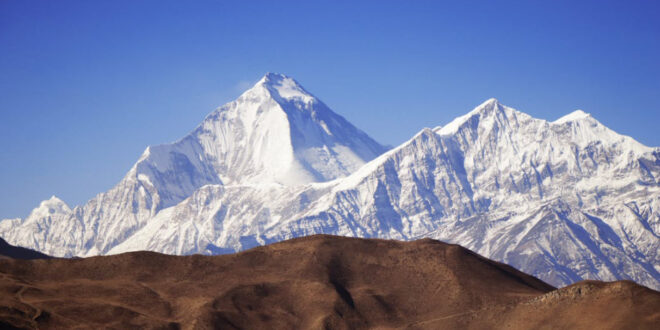Table of Contents
Ever wondered what it’s like to live on the roof of the world?
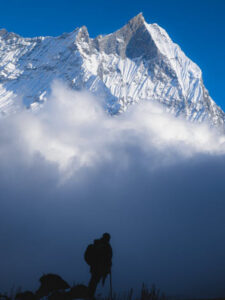 No, seriously—imagine waking up every morning surrounded by skies so wide and mountains so tall they literally touch the clouds. The kind of place where birds fly below you, the stars feel closer, and the air is so thin it makes your head spin just from tying your shoes. Welcome to Nepal—home of the legendary Himalayas.
No, seriously—imagine waking up every morning surrounded by skies so wide and mountains so tall they literally touch the clouds. The kind of place where birds fly below you, the stars feel closer, and the air is so thin it makes your head spin just from tying your shoes. Welcome to Nepal—home of the legendary Himalayas.
And yes, we’re definitely gonna talk about Mount Everest—the tallest mountain on Earth, the peak that everyone wants to climb and almost no one can pronounce in the original Tibetan. But spoiler alert: Nepal is way more than just Everest.
This isn’t one of those geography class videos that makes you feel like you’re stuck in the back row waiting for the bell to ring. Nope. We’re diving into secret valleys, ancient myths, wild animals that look like they were designed by a fantasy illustrator, and tectonic drama so epic it could be a Netflix series.
So grab your metaphorical hiking boots, maybe a yak or two, and let’s start at the beginning. And by beginning, I mean… millions of years ago.
The Mighty Mountains – A Living Legend
You ever hear the phrase “continental drift” and imagine two continents awkwardly sliding past each other like shy party guests? Yeah, no. What happened in South Asia was more like one continent shoulder-checking the other like a sumo wrestler—and that’s how the Himalayas were born.
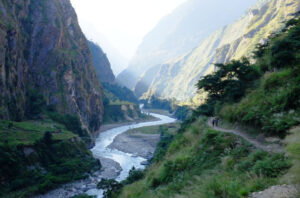 Here’s the real tea: About 50 million years ago, the Indian subcontinent—yes, the entire chunk of land we now call India—broke off from a massive ancient landmass called Gondwana and started drifting north. Slowly. Like 5 centimeters a year. Basically, fingernail growth speed. But it was determined.
Here’s the real tea: About 50 million years ago, the Indian subcontinent—yes, the entire chunk of land we now call India—broke off from a massive ancient landmass called Gondwana and started drifting north. Slowly. Like 5 centimeters a year. Basically, fingernail growth speed. But it was determined.
And then… BAM. India slammed into Asia.
It wasn’t a soft landing. It was the geological version of a car crash. No seatbelts. No airbags. Just full tectonic impact. And when two massive land plates collide, something has to give. In this case, it was the Earth’s crust, which had no choice but to crumple, buckle, and rise—and give birth to the tallest mountain range on Earth: the Himalayas.
Still with me? Good. Now here’s the part that’ll bend your brain a little: The Himalayas are still growing. That’s right. India didn’t just crash into Asia once and call it a day. Nope. It’s still slowly shoving itself under Asia—kind of like when someone keeps pushing their chair into your space at the dinner table and pretending not to notice.
Every year, the Himalayas rise by about 5 millimeters. Doesn’t sound like much? Well, over a thousand years, that adds up. And in the world of mountains, that’s like putting on a fresh pair of platform shoes every century.
Now let’s talk climate—because the Himalayas don’t just sit there looking pretty. They’re climate powerhouses. These mountains act like a giant wall separating weather systems. On one side, you’ve got the dry, cold air of Central Asia. On the other side, the warm, moist monsoon air from the Indian Ocean.
And when those two air masses meet at high altitudes? Boom—dramatic weather, sudden storms, and massive snowfall. This is also why the Himalayas are responsible for feeding some of the biggest rivers in the world, like the Ganges and the Brahmaputra. Those snow-capped peaks? They’re basically giant frozen water towers.
Oh, and get this—there are actual marine fossils found up in the Himalayas. Yeah. Fossils. Of sea creatures. On top of a mountain. Why? Because millions of years ago, the Tethys Sea used to sit right where the Himalayas are now. And when all that ocean floor got crumpled and lifted, it brought some unexpected souvenirs—like ancient seashells, fish bones, and salty mineral deposits.
You know where this is going, right?
Pink Himalayan salt.
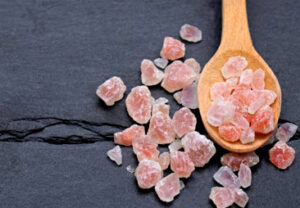
That trendy stuff on your kitchen counter? It’s literally ancient ocean salt that got caught in the collision and preserved in underground crystal layers. So the next time you sprinkle some of that pink goodness on your popcorn, remember: you’re basically eating prehistoric ocean dust that got squeezed up into the sky. Bon appétit.
So to recap: the Himalayas are not just tall, they’re still getting taller. They’re not just beautiful—they’re earth-shaping, weather-controlling, climate-altering, and filled with ancient ocean secrets.
And we’re just getting started.
Life at the Top – How People Actually Live Here
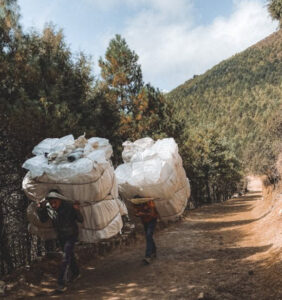
Okay, so you’ve got sky-high mountains, bone-chilling cold, and air so thin it feels like your lungs are trying to whistle instead of breathe. Sounds like a great place to live, right?
Well… for some people, it actually is.
Meet the Sherpa people—the real-life legends of the Himalayas. They’re not just guides or climbing assistants (although they are insanely good at that). They’re an entire ethnic group that’s been living in these harsh mountain conditions for centuries. Like, generations of altitude champions. They’ve adapted over time to thrive at high elevations with lower oxygen, which is basically a superpower if you think about it.
And here’s the kicker: while most of us would be gasping after walking up one flight of stairs at base camp, Sherpas can carry double their body weight on steep mountain paths like it’s no big deal. Some of them walk days—days—just to bring supplies to climbers. And they do it in worn-in boots and faded jackets, not fancy North Face gear with a hundred zippers.
Sherpa villages are tucked into remote valleys with names that sound like places in a fantasy novel—Namche Bazaar, Lukla, Phortse. They live in stone houses, cook with yak dung (yup), and rely on solar power where they can get it. It’s not an easy life, but it’s deeply rooted in tradition, resilience, and community.
Speaking of yaks—let’s talk about the fluffiest off-road vehicle in the world.
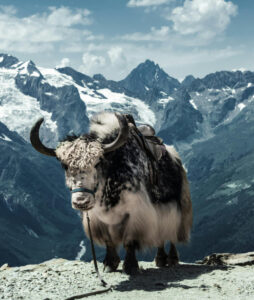
Yaks are basically the SUVs of the Himalayas. Massive, shaggy, sure-footed, and capable of carrying enormous loads through steep, icy terrain. Imagine a buffalo crossed with a mountain goat wrapped in a wool sweater. That’s a yak.
They’re not just pack animals—they’re survival MVPs. Yak milk, yak cheese, yak butter tea (yes, that’s a thing), yak wool for clothes, and yak dung for fuel. In the high Himalayas, if you don’t have a yak, you don’t have much.
Now, you might be wondering: how do people farm in a place where you can barely breathe, let alone push a plow?
The answer: terraces. These are man-made steps carved into steep hillsides, which keep soil from washing away and make farming at altitude possible. People grow hardy crops like potatoes, barley, and buckwheat, sometimes up to 13,000 feet above sea level. That’s basically gardening on the edge of space.
Add in snowstorms, avalanches, earthquakes, and monsoons, and you’ve got a climate that’s, let’s say… a little dramatic. But mountain people know how to adapt. They build homes with thick walls, stockpile for winter, and move with the seasons like nature’s seasoned chess players.
And tucked between those impossible peaks? You’ll find hidden valleys that were once used as ancient trade routes—caravans carrying salt, wool, and tea between Nepal, Tibet, and India. These passes were guarded by mountain gods (or at least, that’s what the stories say), and many of them are still walked today by monks, traders, and villagers heading to the next town over… which might be a seven-day hike away.
This isn’t just survival—it’s a whole way of life.
Nature Gone Wild – The Flora, the Fauna, the Unexpected
Alright, let’s talk wildlife.
You’d think that at such high altitudes, not much could survive, right? I mean, between the freezing temperatures, the thin oxygen, and all the sheer cliffs, it’s not exactly a five-star resort. But nope. The Himalayas are full of weird, rare, and magical life.
Let’s start with the snow leopard—a creature so elusive it’s sometimes called the “ghost of the mountains.” They’re almost impossible to spot in the wild because they’re masters of camouflage, and they roam solo across vast territories. But if you do see one, it looks like it walked straight out of a dream. Big fluffy tail, pale spotted fur, intense stare. Basically the ninja of the feline world.
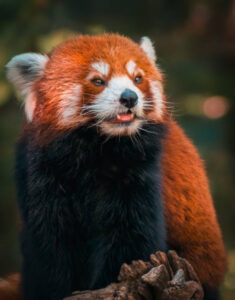
Then there’s the red panda—which, let’s be honest, is kind of a misnamed cuteness overload. It’s not actually related to giant pandas. It’s more like a raccoon–fox–cat hybrid that loves hanging out in trees and munching on bamboo. They’re super shy, mostly nocturnal, and, fun fact: they’re the original “panda.” They got the name before the black-and-white bear did!
And we have to mention the Himalayan monal—Nepal’s national bird. This thing is a walking disco ball with feathers. Metallic blues, greens, pinks—it’s like nature went a little wild with the paintbrush. The males look like they’re always ready for a party, while the females, as usual, go for a more practical, earth-toned look. (Because someone has to survive the predators.)
Now, on the plant side—there are rhodiola and edelweiss and other tough little green guys that cling to rocks, bloom in snow, and somehow don’t care that they’re basically living on the edge of an ice cube. Some of these plants are used in traditional medicine, while others just stand there being living proof that nature is tougher than we think.
Here’s what’s really cool: the biodiversity of Nepal changes dramatically the higher you climb. You start in tropical jungles down south, with rhinos and tigers (yes, actual Bengal tigers). Then you move through pine forests, rhododendron-covered hillsides, and eventually into alpine tundra and icy wastelands where almost nothing grows.
It’s like climbing through multiple entire ecosystems in one country.
Oh—and about the dinosaur fossils. So, no, you’re not gonna find a T. rex bone sticking out of Mount Everest. But you will find ancient marine fossils—like ammonites, trilobites, and other squiggly sea creatures—embedded in rocks that now sit miles above sea level.
Why? Because, as we said earlier, the Himalayas used to be the bottom of the ocean. So when India crashed into Asia and the crust buckled upward, it took all those ancient seabeds—and their salty, fossil-filled rocks—with it.
Which means… you could literally find seashells in the sky.
So yeah. The Himalayas aren’t just tall—they’re alive. Teeming with strange animals, high-altitude plants, ancient marine rocks, and ecosystems stacked like layers on a birthday cake baked by a very eccentric planet.
And we haven’t even reached the myths yet.
Myths, Gods, and Sacred Peaks
Let’s be real: if you were a god, and you wanted a dramatic place to chill—like a celestial penthouse suite with misty views and thundercloud decor—you’d probably pick the Himalayas too.
These mountains aren’t just tall—they’re sacred. For millions of people across Nepal, Tibet, India, and Bhutan, the Himalayas are more than rocks and snow. They’re the home of the gods. The gateway to the divine. The spine of the universe, if you ask certain texts.
Take Mount Kailash, for example. It’s not even the tallest peak in the range, but it’s considered the most spiritually powerful. In Hinduism, it’s said to be the abode of Lord Shiva, the destroyer and transformer of the universe. Picture Shiva, cross-legged, meditating in an eternal snowstorm. Zero distractions. Wi-Fi? Please. He doesn’t need it.
But here’s the twist: Mount Kailash has never been climbed. Not legally, not officially, not even by hardcore mountaineers who’ve conquered Everest ten times. Why? Because it’s so sacred that climbing it is seen as an act of disrespect—like marching into someone’s place of worship in muddy boots and trying to redecorate.
Instead, pilgrims from all over Asia do a ritual walk around it. A 52-kilometer trek known as the kora, which is believed to cleanse your sins and bring good karma. And some people don’t just walk. Some prostrate themselves—lying flat on the ground after every step. Imagine doing that over mountains and stones for three days straight. Talk about devotion.
Now let’s swing back to Mount Everest—called Sagarmatha in Nepali and Chomolungma in Tibetan, which means “Goddess Mother of the World.” Kind of gives you goosebumps, doesn’t it?
While the world sees Everest as the ultimate physical challenge, many locals view it as something else entirely: a holy entity. A guardian. A place where gods reside. Sherpas often perform pujas—spiritual ceremonies—before climbing, asking the mountain’s blessing and protection. You don’t just climb Everest. You respect her.
And if you think that’s mystical, wait till you see the temples that seem to defy gravity. Nepal is full of them. Temples clinging to cliffsides, perched on narrow ledges like birds’ nests made of stone. The Pathibhara Temple, for instance, sits so high up in the clouds it’s often hidden by mist. It’s sacred to both Hindus and Buddhists, who trek for hours (or days) to get there.
Speaking of Buddhism—some legends say that hidden within the Himalayas are secret valleys, protected by gods and only visible to those who are spiritually pure. These places are called beyuls, and they’re said to be refuges of peace, beauty, and supernatural harmony—sort of like hidden realms where nature and spirit exist in perfect balance. Think Shangri-La, but less commercial.
And here’s a fun little tale for you: in some Himalayan regions, people believe that yetis—giant, shaggy, snow-covered beings—roam the high peaks. Now, whether you think that’s folklore, misunderstood wildlife, or just a tourism boost is up to you. But the belief is strong, and even some monasteries have preserved what they claim are yeti scalp relics. (No promises on DNA testing.)
The bottom line? These mountains aren’t just a physical landscape—they’re a spiritual one.
Every peak has a name. Every valley, a legend. Every path has been walked by monks, pilgrims, or shepherds whispering prayers into the wind. In the Himalayas, you don’t just hike. You listen. You honor. You walk among stories so old they were already ancient when your ancestors were just learning how to build fires.
So the next time you see a photo of Everest or Annapurna or some remote Himalayan ridge wrapped in snow and mystery, remember: you’re not just looking at nature. You’re looking at a sacred skyline.
Nepal Beyond the Mountains
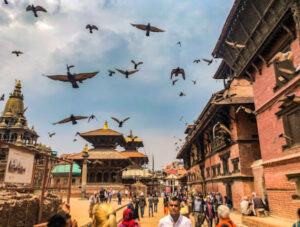 Okay, so yes—Nepal has the tallest mountains on Earth, hidden valleys, mythical creatures, and sacred peaks. But let’s not forget: most people in Nepal don’t actually live in the Himalayas. Shocking, I know. Not everyone wakes up to a snow leopard in their backyard.
Okay, so yes—Nepal has the tallest mountains on Earth, hidden valleys, mythical creatures, and sacred peaks. But let’s not forget: most people in Nepal don’t actually live in the Himalayas. Shocking, I know. Not everyone wakes up to a snow leopard in their backyard.
Head south from the icy peaks and you’ll discover a whole different world. One with ancient cities, crowded markets, hidden courtyards, temple bells, motorbike horns, and the smell of incense, dust, and sizzling street food all mixing in the air like some kind of chaotic perfume.
Welcome to Kathmandu—the capital, the heart, the glorious tangle of past and present. This city isn’t just old. It’s ancient. We’re talking 2,000 years of uninterrupted civilization. The kind of place where every alley seems to lead to a shrine, every wall is a canvas of carved gods, and every rooftop could easily have a monkey chilling on it like it owns the place. (Because it probably does.)
One of the wildest things about Kathmandu? You can walk past a 7-Eleven-style snack shop, a medieval palace, and a centuries-old temple in a single block. The architecture here is pure magic: pagoda roofs stacked like birthday cakes, stupas with sleepy eyes watching the street, and intricately carved windows so delicate you’d think the wood was stitched, not chiseled.
Then there’s Durbar Square—which, by the way, isn’t just one square. It’s a whole cluster of them in different parts of the city, packed with palaces, temples, statues, and the feeling that time isn’t exactly sure what year it is anymore.
But here’s where things get really fascinating: ever heard of the Kumari?
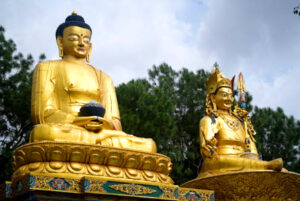 The Kumari is a living goddess. As in, a real little girl who’s believed to be the human incarnation of Taleju, a powerful Hindu goddess. She’s chosen when she’s very young—like toddler-young—and has to pass a series of intense spiritual and physical tests to prove she’s worthy. We’re talking about keeping her calm while priests perform scary rituals involving buffalo heads and candlelit chambers. Basically a divine job interview.
The Kumari is a living goddess. As in, a real little girl who’s believed to be the human incarnation of Taleju, a powerful Hindu goddess. She’s chosen when she’s very young—like toddler-young—and has to pass a series of intense spiritual and physical tests to prove she’s worthy. We’re talking about keeping her calm while priests perform scary rituals involving buffalo heads and candlelit chambers. Basically a divine job interview.
Once selected, she becomes the Kumari—worshipped by both Hindus and Buddhists, carried in festivals, consulted for blessings, and treated like royalty. She lives in a special palace in Kathmandu, called the Kumari Ghar, and only appears in public a few times a year. And when she hits puberty? Her divinity is said to leave her, and the search for a new Kumari begins.
It’s an extraordinary tradition—equal parts beautiful, controversial, and deeply cultural.
And the festivals? Oh, Nepal does not play when it comes to celebrating. There’s a saying that Nepal has more festivals than days in the year, and honestly, that feels accurate. Whether it’s Dashain (a 15-day mega-celebration of family, blessings, and goat sacrifices), or Holi (yes, the color-throwing one), or Tihar (the festival where dogs are worshipped and given flower garlands—best holiday ever?), there’s always something happening.
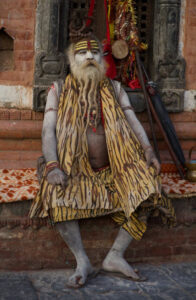
During these festivals, the streets turn into rivers of music and movement. Kids run with kites, adults paint doors with bright red tika marks, and candles light up the nights like fireflies dancing over rooftops.
Even everyday life here feels full of ritual. Morning prayers, marigold garlands, the smell of spices and smoke. A simple walk to the market can feel like a spiritual journey—or at the very least, an obstacle course of sacred cows napping in the road.
And let’s not forget the Terai, the southern plains of Nepal—lush, green, and completely different from the mountain regions. This is where you’ll find jungle safaris, rhinoceroses, wild elephants, and even Bengal tigers in national parks like Chitwan. That’s right—Nepal is one of the few places on Earth where you can hike Everest and see a tiger in the wild.
So whether you’re sipping tea on a terrace in Bhaktapur, lighting butter lamps in a hilltop monastery, dodging monkeys near Swayambhunath (the “Monkey Temple”), or riding a canoe past crocodiles in the jungle—Nepal is always surprising you.
It’s not just the land of mountains. It’s the land of layers.
Climbers, Conquerors, and Crazies

Let’s talk about Mount Everest—or as the Sherpas call it, Chomolungma, “Mother Goddess of the World.” Which sounds way more majestic than “Everest,” let’s be honest. (No offense to Sir George Everest, the British surveyor it was named after—he’d never even seen the mountain.)
Now, everyone’s heard of it. Everyone thinks they kinda know the deal. But climbing Everest is a whole saga—full of triumph, tragedy, ego, survival, science, and sometimes… pure chaos.
Let’s start with the basics: Everest is 8,848.86 meters tall. That’s nearly 29,032 feet. At that height, the air holds only about one-third the oxygen your body needs. Your brain and muscles are basically operating on emergency mode.
It’s called the death zone for a reason. Above 8,000 meters, your body literally starts dying. Slowly, painfully, and irreversibly. You can’t digest food properly. Your cells can’t repair. Your judgment starts slipping, and hallucinations aren’t uncommon.
And yet… thousands of people are like: “Let’s go!”
Ever since Edmund Hillary of New Zealand and Tenzing Norgay, the legendary Sherpa, first summited Everest in 1953, the world has been kind of obsessed. Especially recently. We’re talking Instagram climbers, YouTubers, millionaires, thrill-seekers, adventurers, and people who maybe shouldn’t be climbing a snow-covered monster in the sky.
Nowadays, climbing Everest is sort of a business. You pay a guide company somewhere between $30,000 to $100,000, and they’ll organize everything: permits, food, oxygen, tents, Sherpa support, and all the logistics. Some even offer “luxury” base camp experiences—with lattes, Wi-Fi, and heated tents. (Just in case the whole “spiritual struggle for survival” thing isn’t your vibe.)
But don’t let that fool you. The mountain is still brutal.
You’ve probably seen those photos: human traffic jams in the death zone. Dozens of climbers in puffy suits standing shoulder to shoulder, waiting in line to reach the summit like it’s a Disneyland ride. Except, instead of cotton candy at the end, it’s frozen fingers, nosebleeds, and maybe a photo if your phone battery hasn’t died yet.
Every year, people lose their lives on Everest. From avalanches, storms, altitude sickness, heart failure, or just bad luck. And here’s the haunting part—most of the bodies stay on the mountain. It’s simply too dangerous to bring them down. Some have even become landmarks with nicknames like “Green Boots.”
And through all this? The Sherpas are the quiet heroes. While many climbers train for months, the Sherpas have lived at altitude all their lives. They carry everything—tents, ropes, oxygen tanks, stoves, ladders. They fix the routes, check the weather, and risk their lives so someone else can plant a flag and get a photo.
One Sherpa, Kami Rita, has climbed Everest over 28 times. Twenty. Eight. He could basically deliver a pizza to the summit at this point.
But the physical danger isn’t the only issue anymore. Everest is facing an overcrowding crisis, and yes—also a trash crisis. Discarded oxygen bottles, broken gear, food wrappers, and yes, even frozen human waste litter the climbing routes. There are now clean-up expeditions every year to try and preserve the mountain.
Some critics say Everest has lost its magic—turned into a bucket-list checkbox, a high-altitude selfie spot. But others argue that the mountain still humbles even the most experienced climbers. That it still demands respect, patience, and soul-level grit.
Because no matter how many people try to conquer her… Everest always wins. You don’t climb that mountain unless she lets you.
So yeah—climbing Everest isn’t just a sport. It’s a modern-day myth in motion. A test of everything: body, mind, spirit… and common sense.
And if the idea of climbing it makes you sweat just sitting at sea level? Don’t worry. Watching from the comfort of your couch, with snacks and functioning lungs, is still a valid way to enjoy the adventure.
Final Wonders & Takeaway
So… what is Nepal?
Is it a wall of sky-high mountains crowned in ice?
Is it a yak trail winding through silent valleys where prayers ride on the wind?
Is it a temple bell echoing over rooftops in Kathmandu? A whisper from a snow leopard you’ll never see? The flicker of candlelight beside a stupa’s sleepy eyes?
Yes. It’s all of that.
Nepal is a country that lives in between—between ancient and modern, between earth and sky, between silence and celebration. A place where mountains are gods, and gods live in little girls, where jungles hide tigers and palaces hide goddesses, and the same hand that milks a yak can sculpt a wooden window so intricate it takes your breath away.
It’s a land that stretches your imagination, humbles your lungs, and shifts something deep in your chest just by existing.
And while Everest gets all the headlines, maybe the real heart of Nepal is in the small things—a warm cup of milk tea on a cold morning, a smile from a stranger on a steep trail, the quiet creak of a prayer wheel turning in the wind.
So whether you’re a mountain dreamer, a wildlife lover, a history nerd, or someone just craving a taste of something wild and real and anciently alive—Nepal is waiting.
Not to impress you.
But to change you.
Because once you’ve breathed in the thin air at the roof of the world—even just in your imagination—you’ll never quite see the world the same way again.
About the Author
Camille Sharon Kleinman is an award-winning writer and author who’s been crafting stories since the age of seven. She was first published online and won international writing contests by age twelve.
A member of ISA, she’s ranked as a Top Rated Plus writer and the #17 trainer worldwide.
A highly versatile and skilled writer, Camille creates everything from nonfiction books and fiction stories to song lyrics, screenplays, courses, and podcast scripts.
Learn more about her work at CSKwriting.com.
 OfferJOY.com Relationship, Astrology, Numerology, Save Money, Make Money
OfferJOY.com Relationship, Astrology, Numerology, Save Money, Make Money
